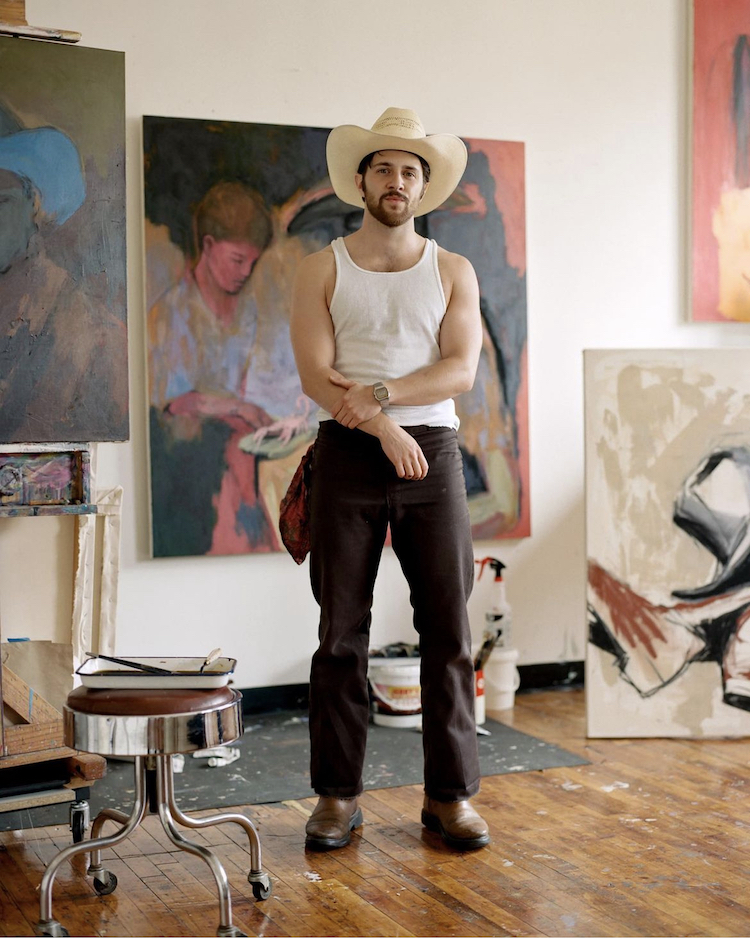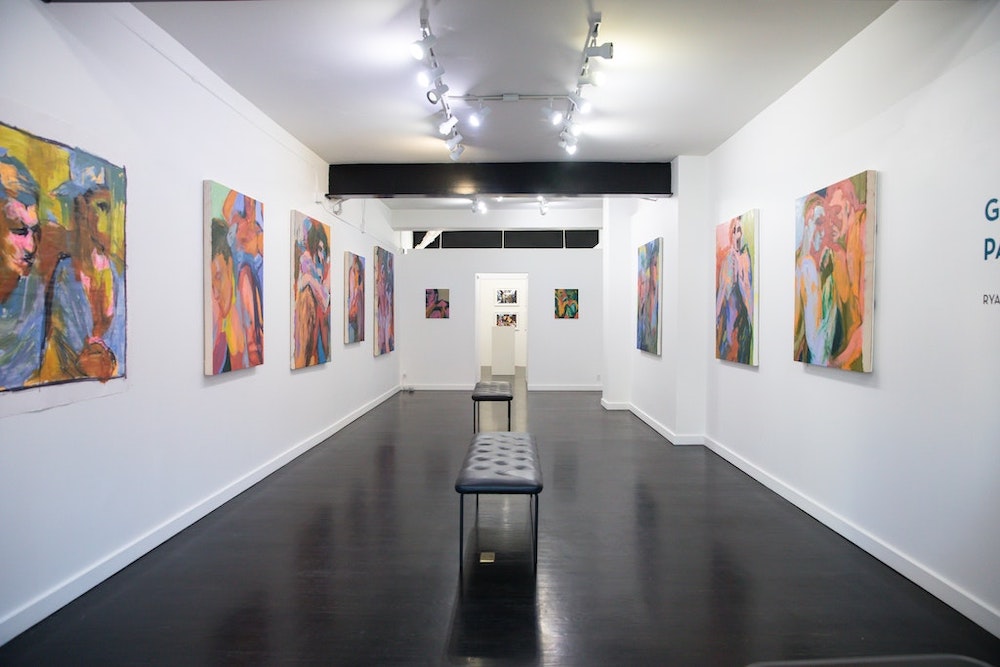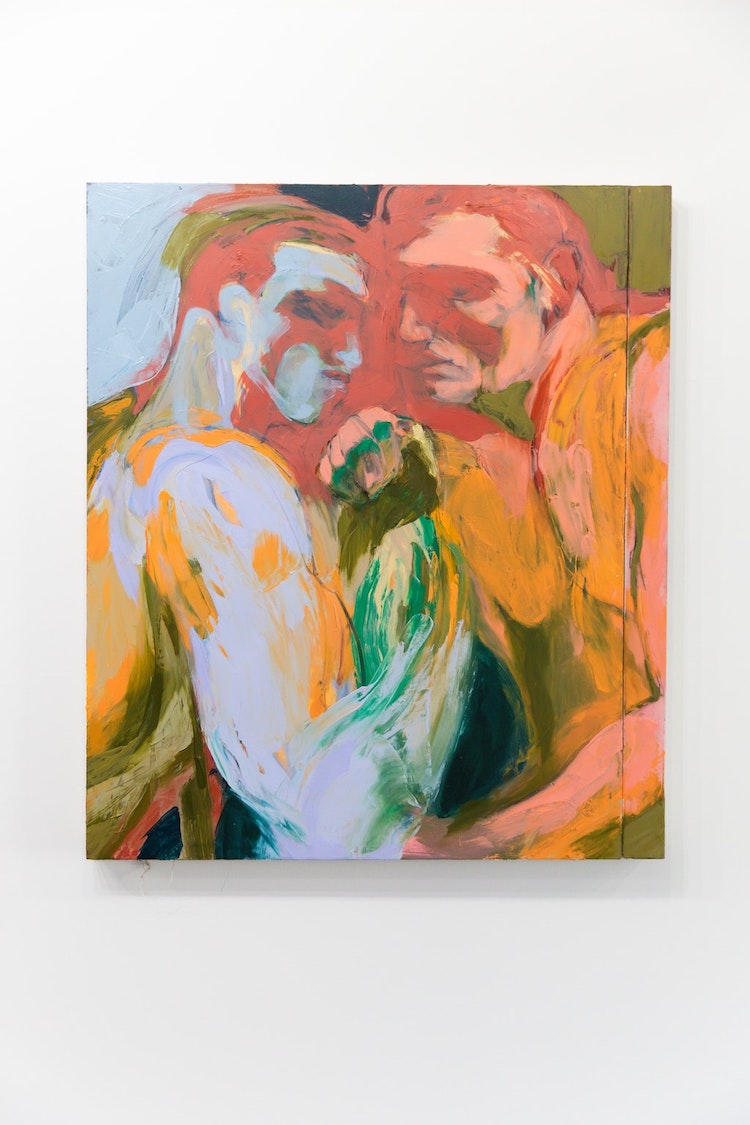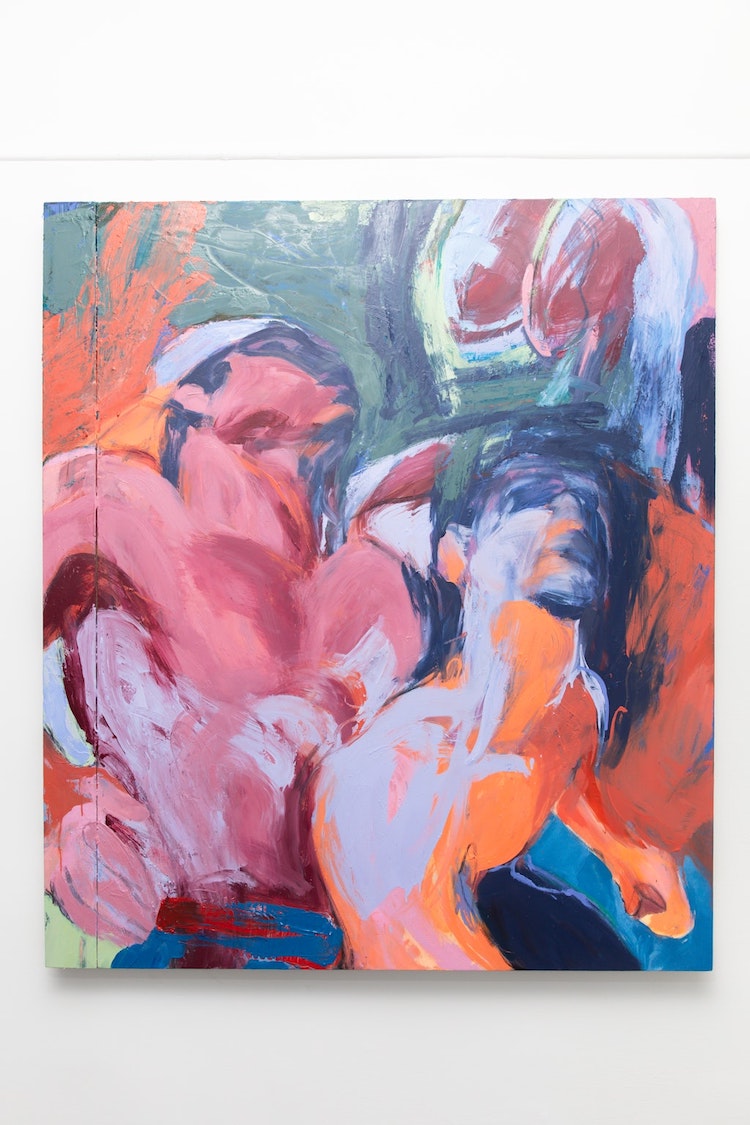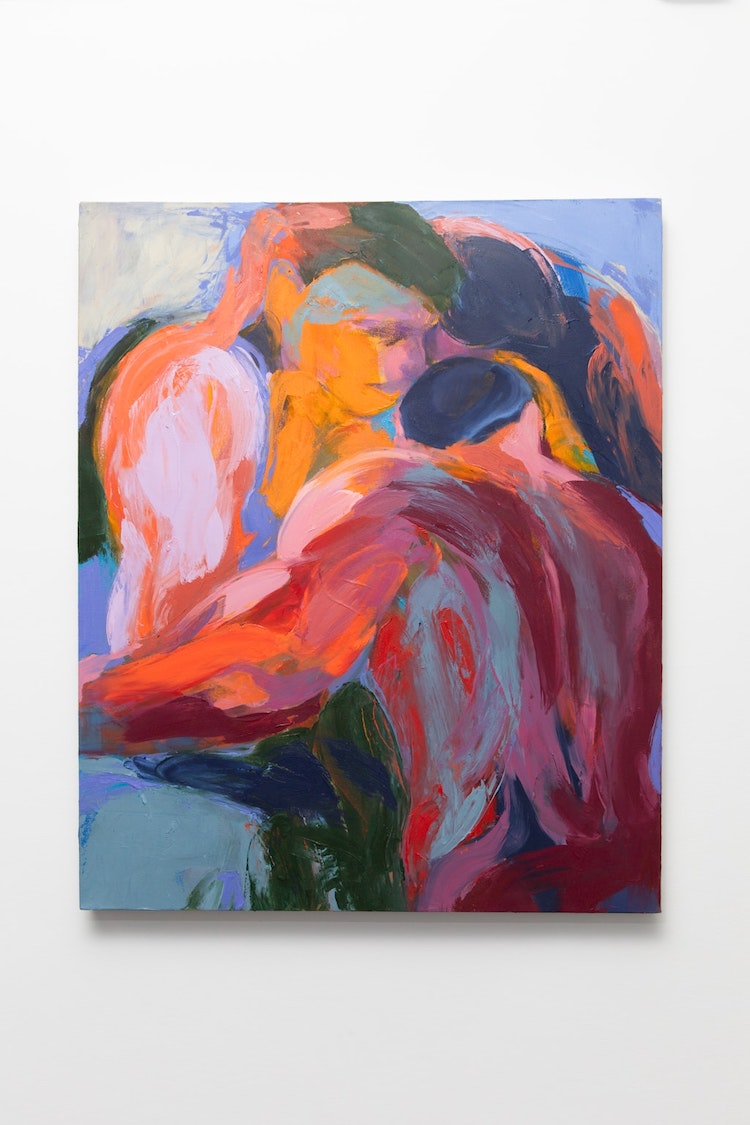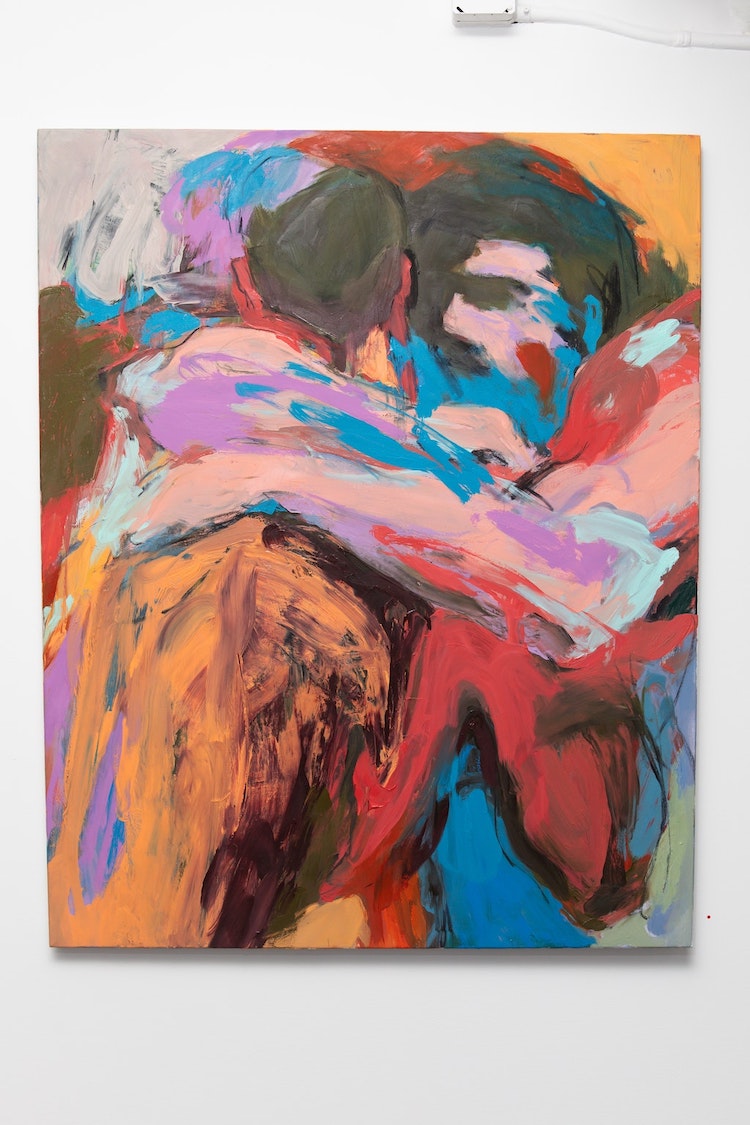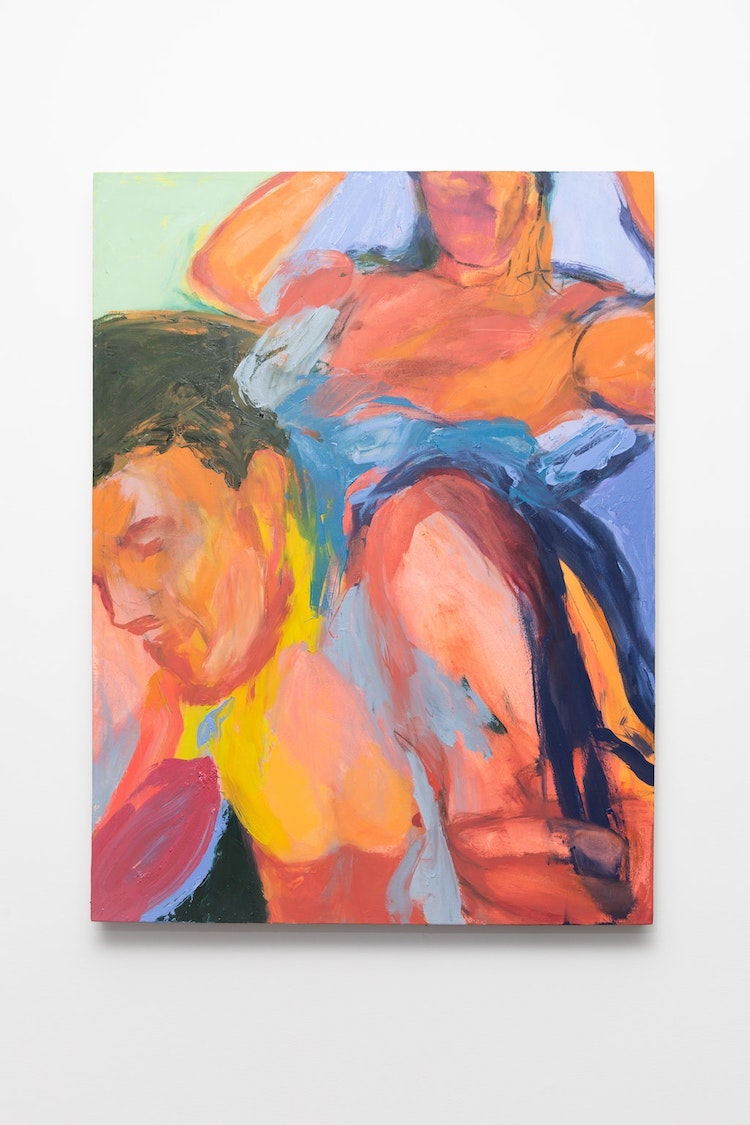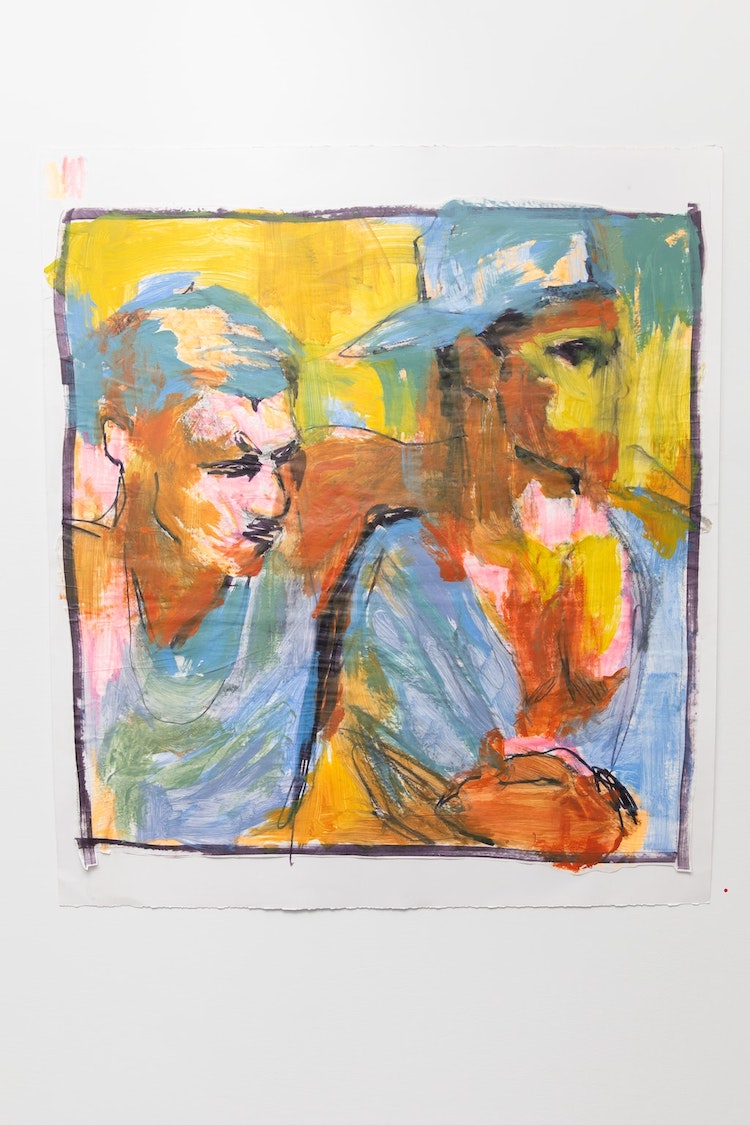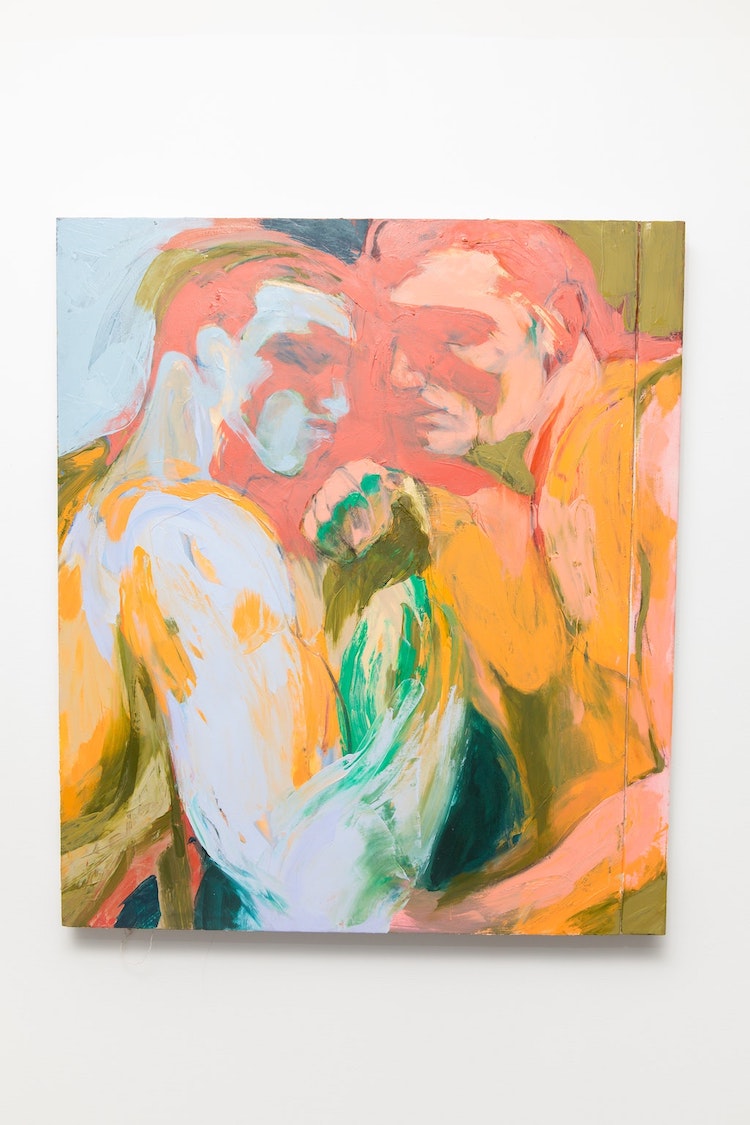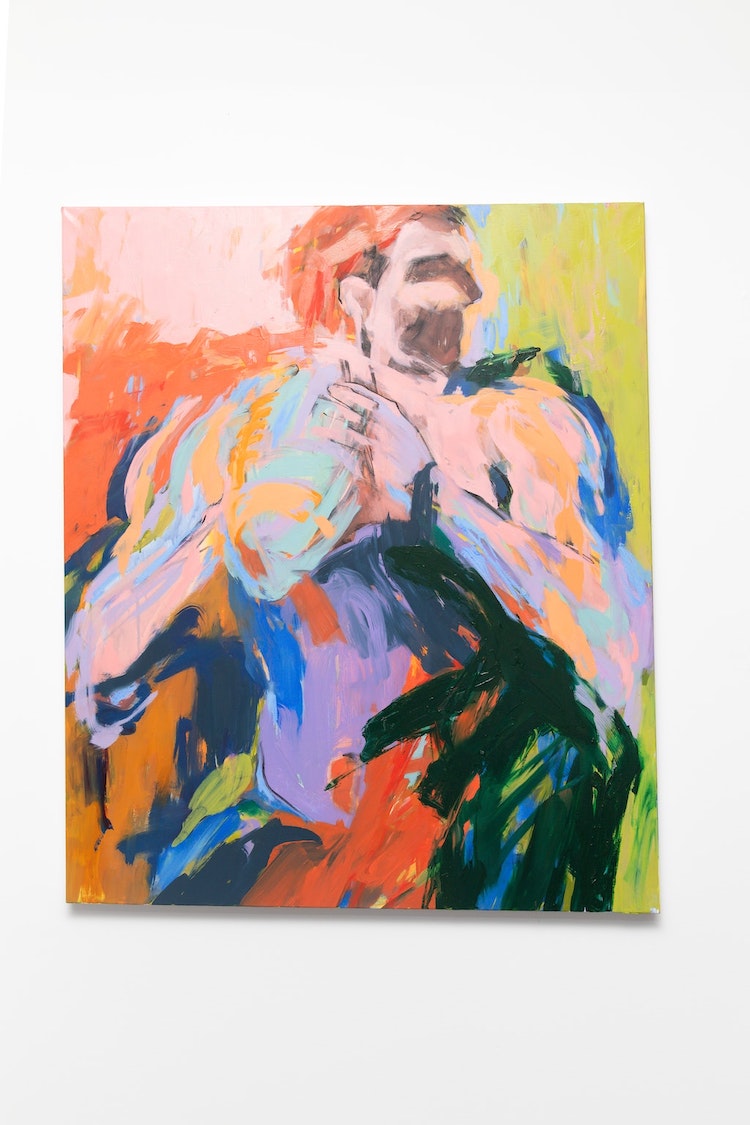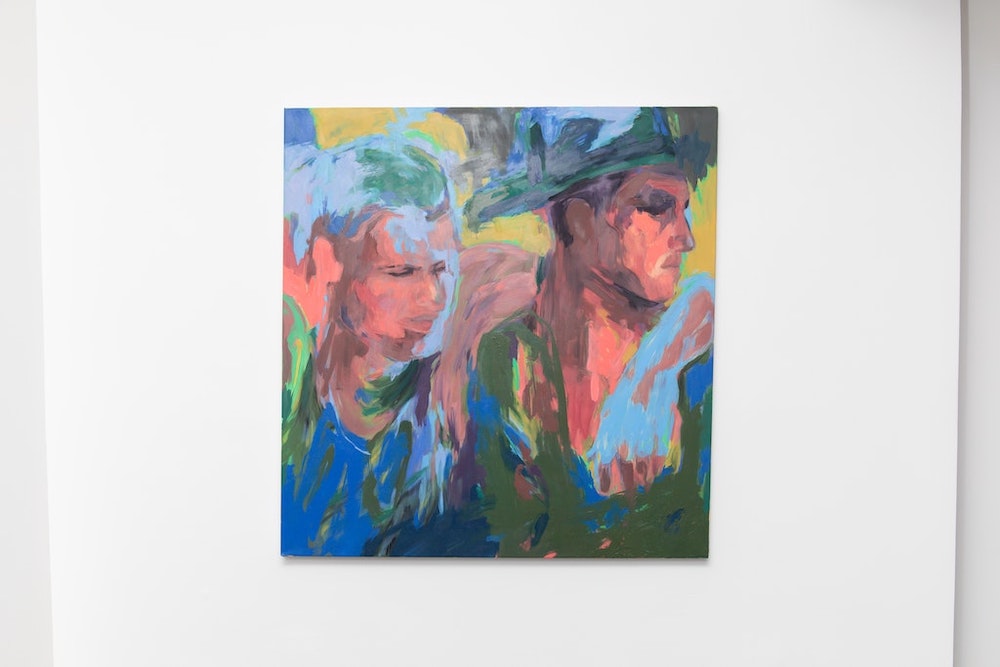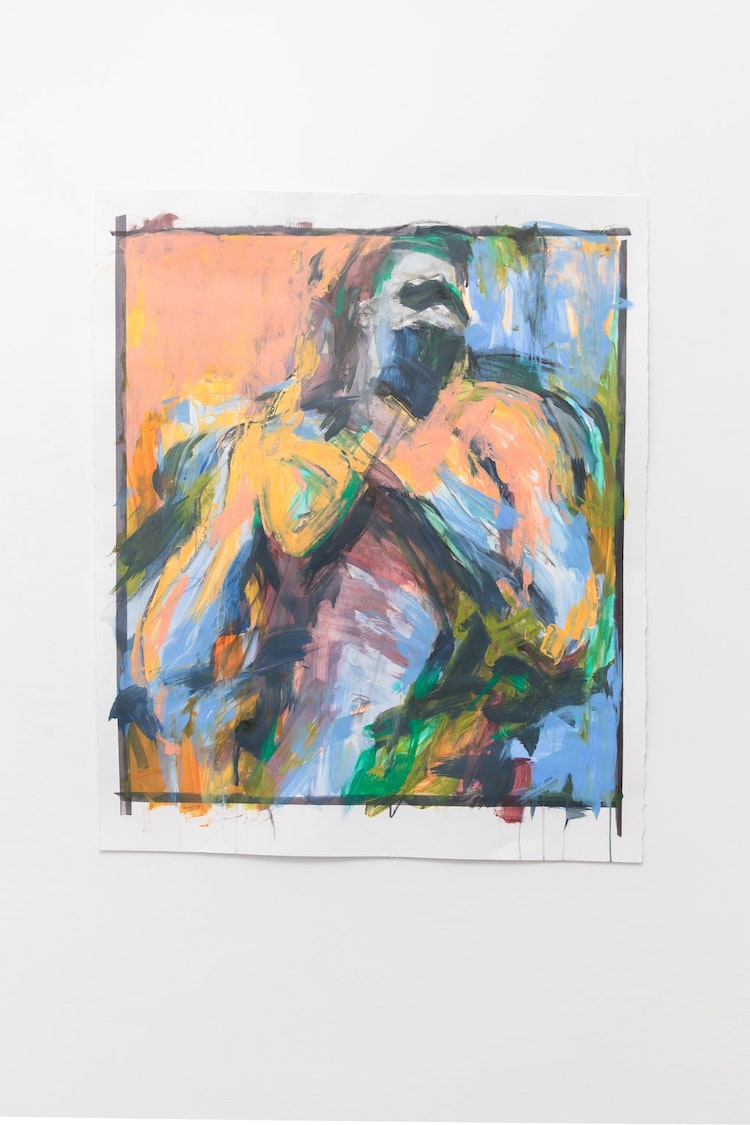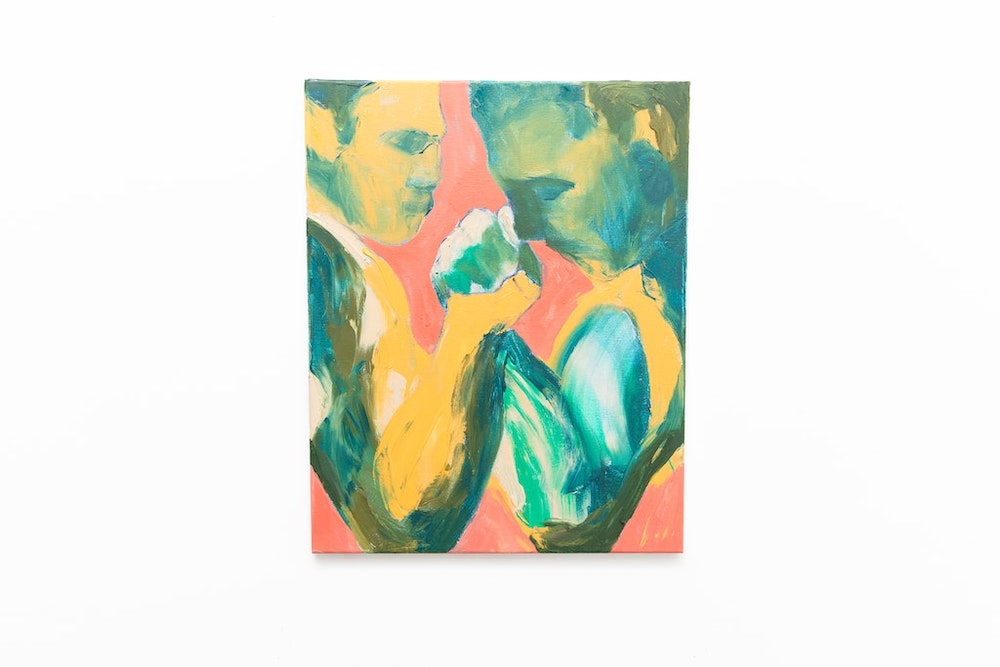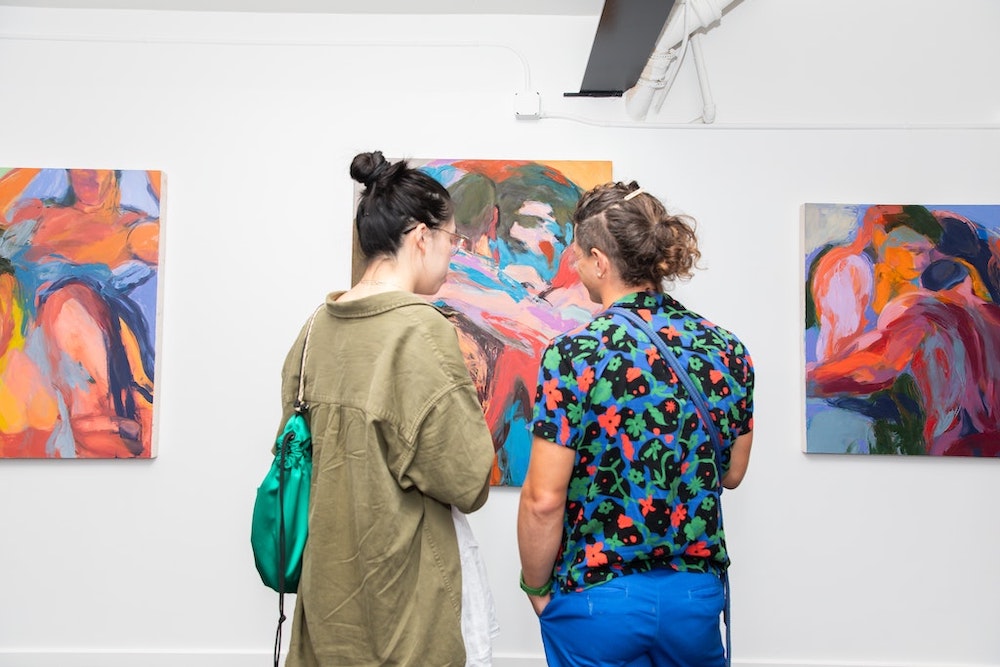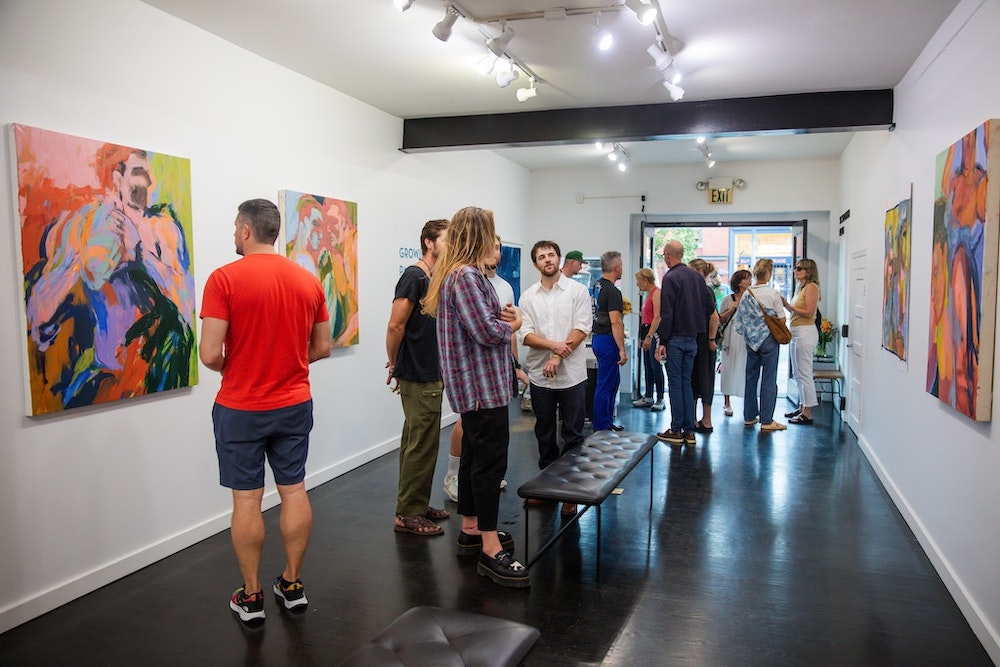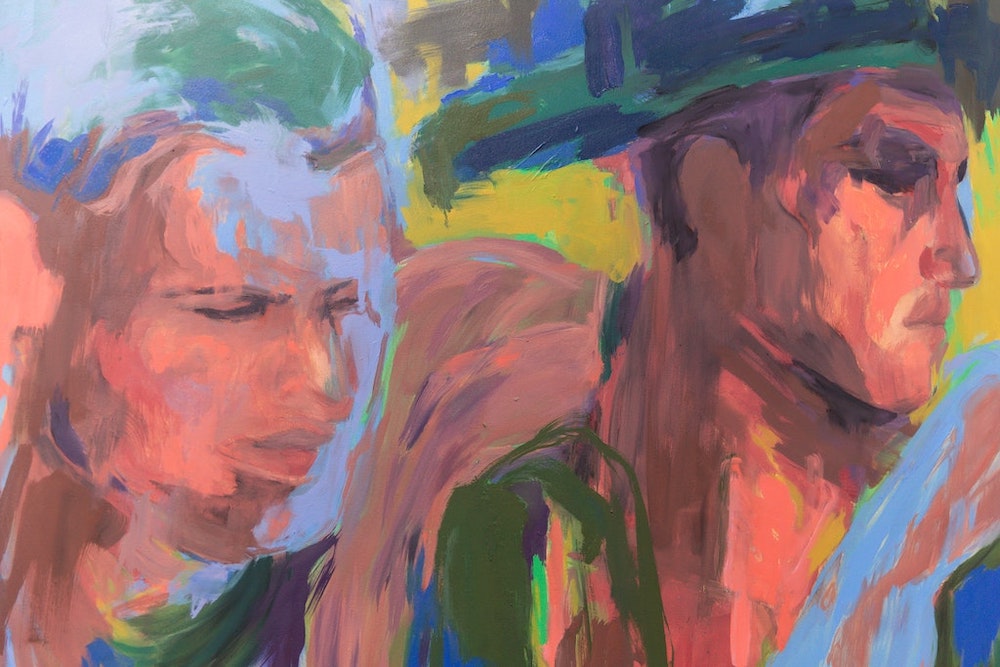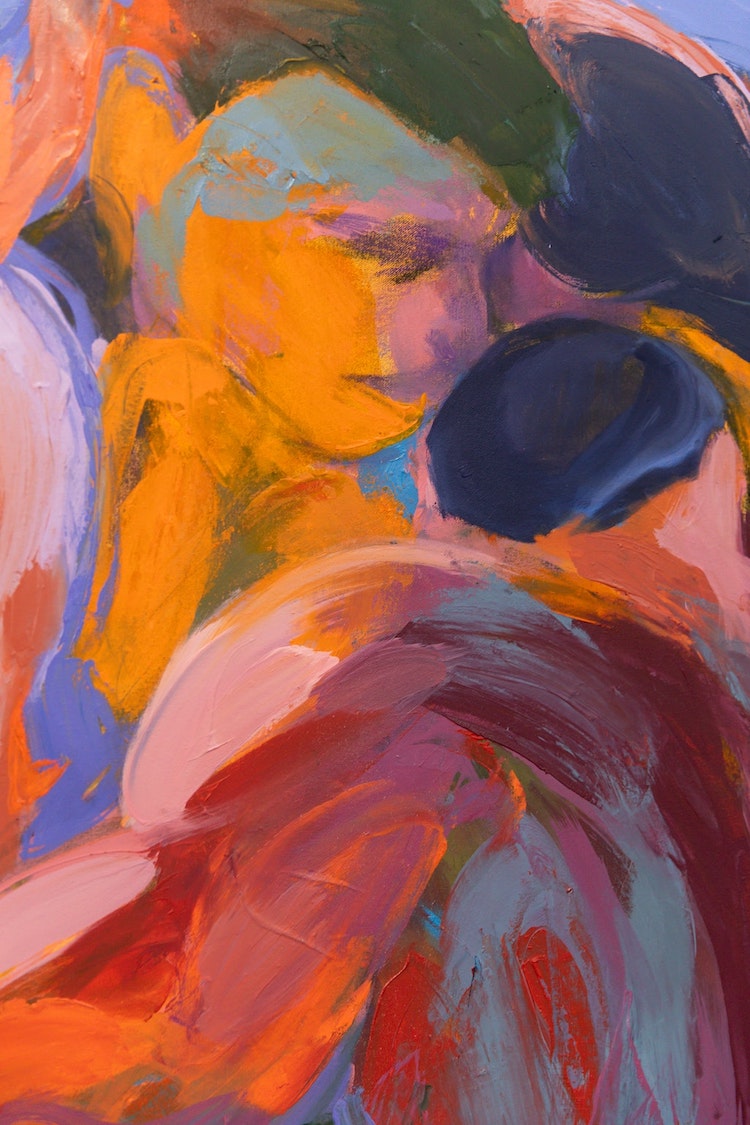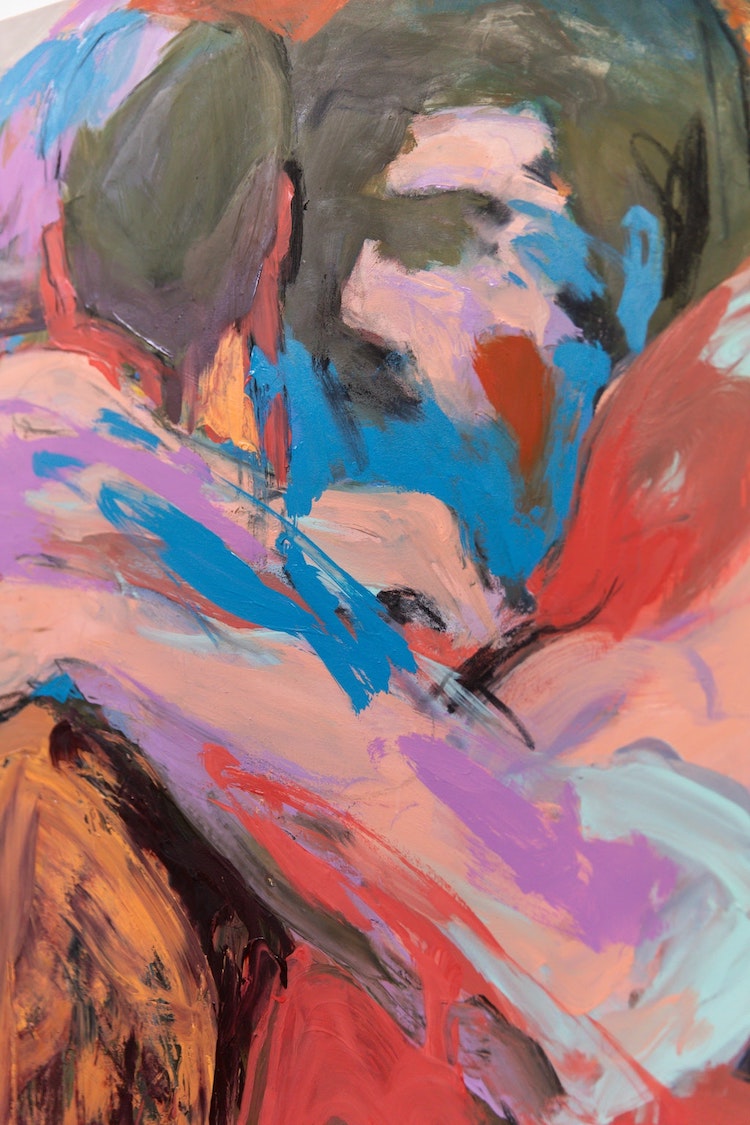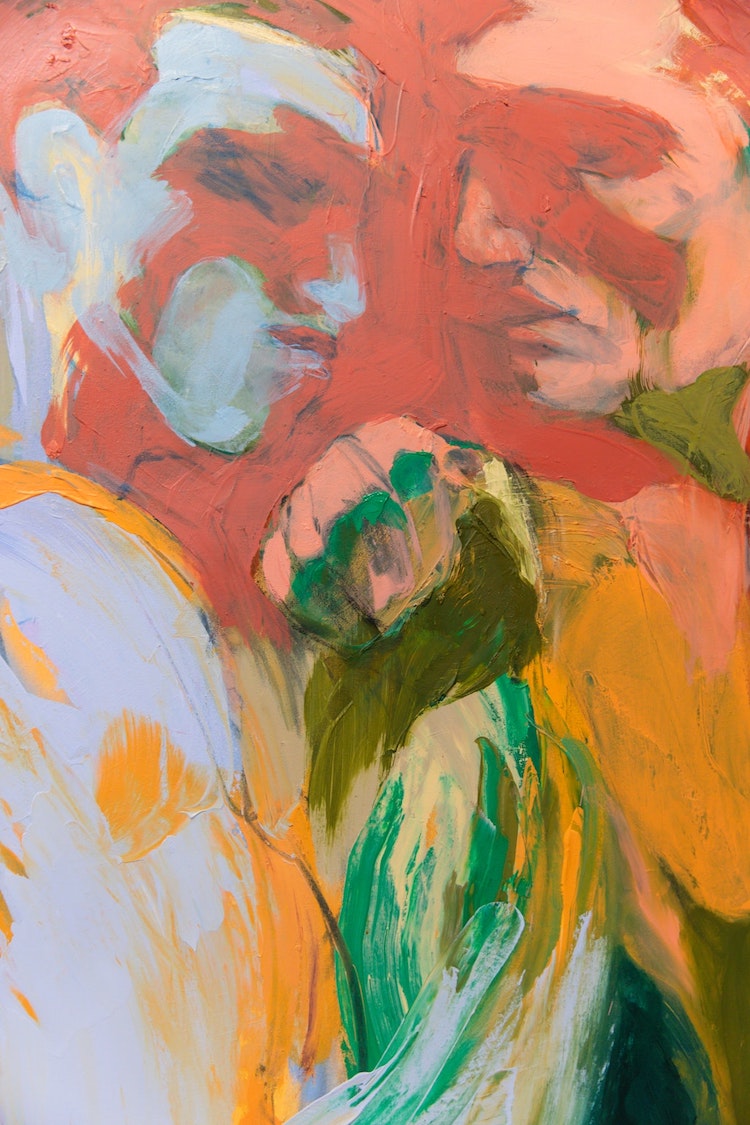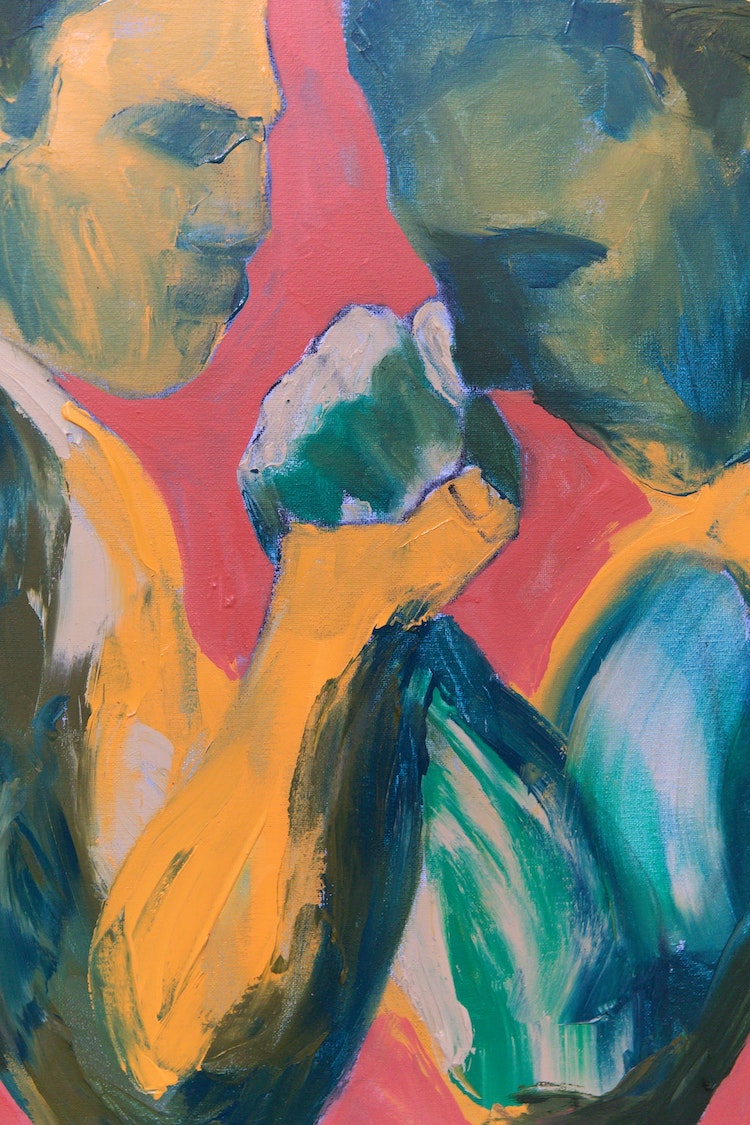Schlomer Haus Gallery is pleased to present Growing Pains, the debut exhibition from multidisciplinary artist Ryan Robichaux. Exploring dualities of masculinity through “acceptable interactions” -for instance, a football tackle, rough housing, or a bro hug–Robichaux deftly weaves his personal experience as a trans man to expose unanticipated, nuanced tenderness and intimacy in the male experience.
Bringing his own memories of what was considered inherently male during his childhood in Texas, he paints snapshots and delves in to find a sense of himself. In exploring the ways his own body has both succeeded and failed in matching traditional expectations of maleness, he begins a discourse about the universal need to compare oneself to societally-imposed standards, driven by his own perception and experiences through his trans identity.
While his early work featured cowboys and gunslingers, this body of work is a departure, considering masculinity in a different light. The beautifully rough and layered gestural work explores the male experience through the trans gaze, serving as a catalyst for a reframing of audience ideas about gender and human connection.
With roots in industrial design, painting is a recent undertaking for the artist. Robichaux previously wrote off painting due to an early, binary-fostered association of artistry and femininity as a mutually exclusive identity; Rediscovering the medium while recovering from gender-affirming surgery during the COVID-19 pandemic, the artist reconciled his own limitations on expression and began opening an entirely new Avenue. Now, as he prepares to present his first ever solo exhibition, his oil paintings feature quick, maneuvered line work and enigmatic characters. With hazy and often unrecognizable faces, he subverts portraiture, emphasizing a physical male expressionism.
Growing Pains references not just periods of development, but also the artist’s own feelings of coming of age, and even stunted growth, as he navigates the world. The collection of works touches on a physicality that he held onto in his youth, emphasizing a love of and longing to inhabit the male figure. Exploring color interactions as a form of relationship, Robichaux presents striking pairings, in his words “queering them, putting together the unexpected.” The dreamlike pieces are Robichaux’s foray into a new medium, a new subject, and a new style. He expertly embraces the clumsiness that comes with change, embracing the inconsistencies to present a new breadth of beauty.

